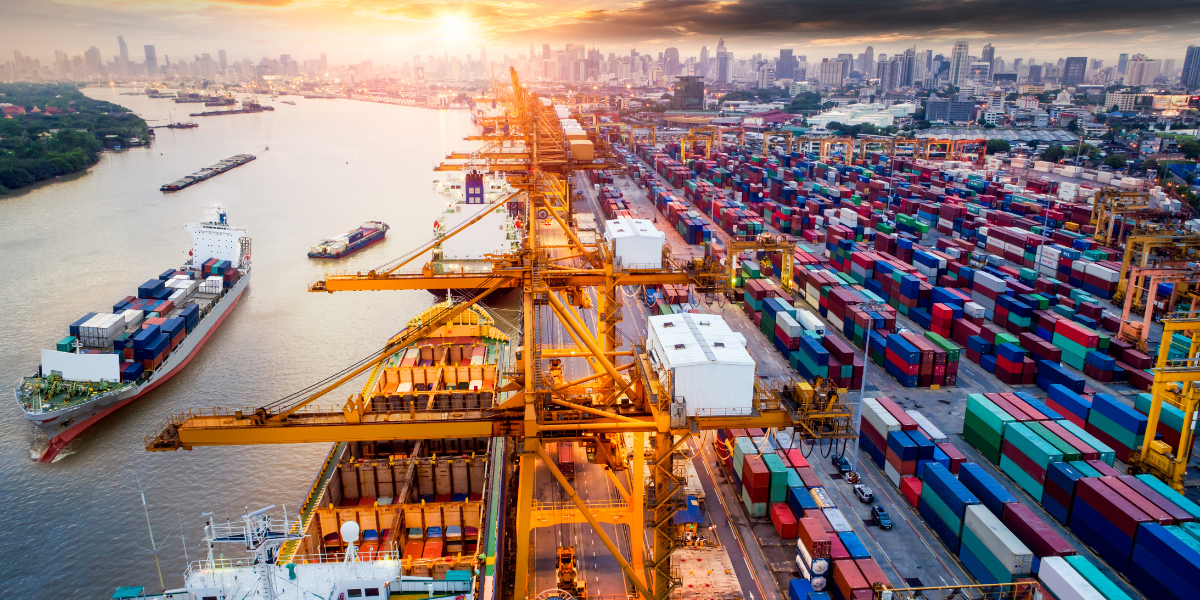
The year 2020 ushered in a series of not-so-good surprises. It disrupted supply chains worldwide, with its unique set of challenges. Yet, various industries have demonstrated commendable resiliency in the face of adversity. Thus, it has created a sense of optimism that 2024 will somewhat be more ‘normal’.
2023: The beginning of recovery from disruptions
2024: The things it has in store for your supply chain
The shift from survival to growth mode
Lower carrier rates and enhanced service
Reshoring and nearshoring will be prioritised
The comeback of lean inventory management
Geopolitics remains a key influencer to supply chain
Returns management and zone skipping will be on the rise
Increased cybersecurity investment
Launch of cutting-edge technology
Increased sustainability
2023: The beginning of recovery from disruptions
Most industry forecasts are drawn from the supply chain trends in 2023. It was during this year when supply chains were getting back on their feet after the Covid-19 pandemic wreaked havoc. As consumer spending diminished, diesel prices and inflation became more moderate. After skyrocketing their prices in 2021 and 2022, respectively, carriers began reapproaching shippers with new yet lower bids. This enabled shippers to land in a powerful position at the negotiation table. So, how will this affect the supply chain in 2024?
2024: The things it has in store for your supply chain
With the new year just a few weeks away, industry experts are forecasting some global supply chain trends designed to propel growth and innovation. Here are some things you can expect.
The shift from survival to growth mode
In the last two years, supply chain professionals have been caught in the trap of surviving one challenge after another. Most decisions were made based on what was affordable or available. As things slowly go back to normal and pressure in the supply chain eases, companies will adopt a more proactive approach to their overall operations. This will pave the way for supply chain managers to reassess their strategies and new prospective business models better.
Lower carrier rates and enhanced service
This 2024, carrier rate reduction is one of the most game-changing trends. The pandemic caused a rise in consumer spending on goods while carrier capacity reduced. This led to carriers’ increased rates for both land, sea, and air transportation. It also took a toll on service levels as lockdowns and labour shortages resulted in transportation backlogs. This left shippers without a choice but to deal with delays, amongst other issues.
Fortunately, backlogs have receded, capacity has grown, and demand has levelled off. This makes the industry well-poised for continued rebalancing in 2024. However, you can still expect accessorial fees for over-dimensional and overlength freight to remain, of course.
Apart from more affordable freight costs, you can also look forward to enhanced customer service. That is because carriers must compete for customer loyalty and business once again.
Reshoring and nearshoring will be prioritised
During the onslaught of the pandemic, some companies boosted their inventories while others addressed their supply chain challenges differently. Reshoring or nearshoring the manufacturing operations has been a common approach. However, this comes with a fair share of pros and cons. Manufacturing in North America is costlier than in Asia, yet transit times are quicker. Moreover, reshoring or nearshoring the components of your supply chain can bypass probable issues caused by backlogs and shortages.
The comeback of lean inventory management
If you are thinking about ‘stocking up’, you’ve guessed it right. This is also one of the supply chain trends in 2024. Lean priority management, which entails keeping only what is required on hand, was on top of the priority list of companies before 2020. However, this strategy backfired when companies didn’t have a stock of products for weeks, or even longer. Investing in third-party logistics (3PL), which encompasses warehousing and storage solutions, is key to preventing supply chain shortages and disruption.
Geopolitics remains a key influencer to supply chain
For centuries, geopolitics has been the dominant factor impacting supply chains. The war between Russia and Ukraine has the potential to turn the global supply chain upside down for as long as it endures. In the same way, any changes in the trade relations between the USA and China, whether positive or negative, could dramatically modify America’s import landscape.
Returns management and zone skipping will be on the rise
As the e-commerce industry grows, so does returns management. Hence, companies with high return rates will continuously search for ways to lower return costs and automate processes. Usually, this is done either through limiting return windows, partnering with several carrier options to pay the best price, or imposing charges for return shipping. In 2023 and beyond, more companies are anticipated to search for strategically located distribution centres where returns can be received and processed.
Zone skipping is anticipated to be one of the most popular logistics trends in 2023. This entails bundling multiple, small parcel shipments for the longest transit leg prior to being separated for the final, shorter leg. Though currently underutilised in the parcel landscape, shippers will experience a breakthrough once they learn more about its advantages.
If you are planning to tap into the potential of zone skipping in your supply chain or enhance your returns management process, a reliable 3PL provider in Dubai can help you out.
Increased cybersecurity investment
Supply chain management is not free from the threats of cybersecurity. A recent study conducted by Argon Security claims that software supply chain attacks increased over 300 per cent in 2021 compared to 2020. They entail stealing a customer’s information and holding data hostage for financial gain.
In 2024, more companies are anticipated to evaluate the risk level of their digital supply chains to safeguard themselves from attacks.
Launch of cutting-edge technology
Nothing can stop technology from dominating every industry. So, don’t be surprised to see drone delivery, warehouse robotics, AI, and any other advanced technology in 2024. However, these are still in the development phase and have a long way to go before they become a mainstream sight in the global supply chain sphere.
Increased sustainability
Though sustainability has been a trend in various industries for some time now, it is anticipated to grow even further in 2023. Due to more stringent government regulations and consumer demands, more companies will adopt greener practices this year. These include assessing greenhouse gas emissions in their transportation modes and sourcing sustainable raw materials.
Indeed, 2024 is a year of massive changes and promising opportunities for the supply chain industry. However, determining which to embrace is key to ensuring a solid ROI.
At Total Freight International, our team of industry veterans are committed to helping companies scale their business, boost efficiency, and tap into opportunities while reducing costs through strategic supply chain and logistics practices.
Need a breakthrough this year? Get in touch with us today to get started!


